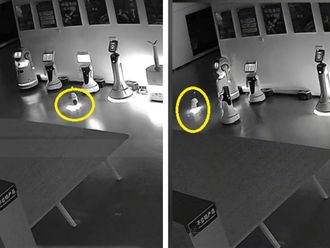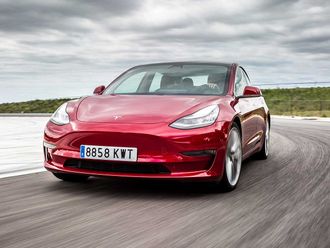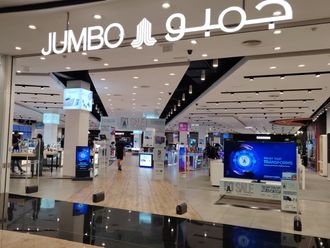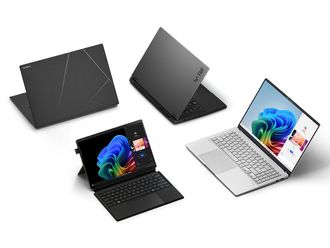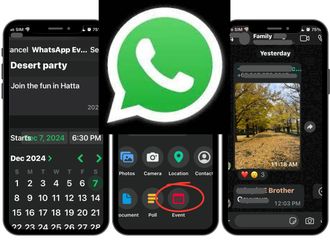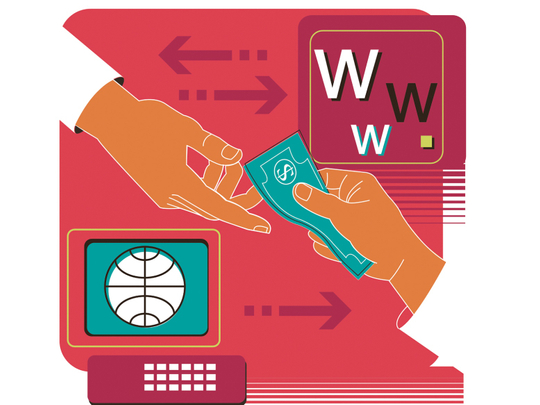
Calling it the World Wide Web may not be correct when it comes to online shopping. While a shopping site can be accessed virtually anywhere in the world, the shoppers it serves, the delivery methods and the payment strategies are very regional.
Online retailers in the Middle East say that adapting their brands to this market is one of the secrets of their success.
"The Middle East market is characterised by high availability of offline retail, which held back consumers a bit. They'd just drive to the closest mall. We needed a model that would cater to this market," says Omar Kassim, founder of UAE-based shopping site JadoPado.com, which sells electronics, IT and fashion products. The site has seen a 40 per cent jump in online sales for the year ended April 2012, with business worth Dh4.7 million transacted.
One strategy that Kassim employs is to ensure that the gratification stays close to instant. "We have a rule that everything listed on the site should be in stock - if it is not, it goes off the site. And we ensure same-day delivery," he tells GN Focus.
Globally, three to seven days is the normal delivery time for purchases made on the internet. In the UAE, websites such as JadoPado, Aido and Namshi deliver the same day, a feature of advanced markets such as the US and the UK.
Mona Ataya, co-founder and CEO of Mumzworld, an online retailer for products for mothers and children, is following the same strategy when she says, "Shoppers on our website are able to buy what they want, when they want it and have it delivered quicker than ever before." Mumzworld promises delivery within the UAE in one to three days, "although same-day and next-day deliveries are the norm," says Ataya.
Besides delivery on the same day, free delivery is also taken for granted. "Unlike in other places, because of high availability of offline retail, customers don't put a value on delivery costs. They are not willing to pay for delivery," says Kassim.
The ME difference
Shoppers, particularly those buying electronics and gadgets, have long been known to use the internet to make up their mind.
"Our surveys show that when people make a decision to buy a laptop they ask their friends and do their homework online. Our feedback is that 80 per cent of people know what they want by the time they go to the retailer. Retailing is the end of the cycle," says Pearce Clune, marketing director for Dell for Emerging Markets EMEA, Retail and Distribution.
However, experts are quick to point out that the Middle East customer relies on touch-and-feel for the actual purchase, when in countries such as the US online shopping is so successful that it may face taxation soon.
"The market here is so nascent that some customers still have not had their first online experience, in comparison to, say, Europe where online shopping has been around for a decade and half. We still have customers who call up the centre asking where the cart is and where the store is located. We have even created a video explaining the process," says Kassim.
Still, things are looking up. A MasterCard survey released this March on online shopping behaviour revealed that 42 per cent of UAE shoppers accessed the internet for online shopping in 2011, up from 33 per cent in 2010. The survey also found that shopping via mobile phones is increasing, with 15 per cent of consumers surveyed planning to do so in the coming months.
Dedicated online shops are now seizing this advantage of being connected to consumers, allowing them to compare and review products before the purchase. Mumzworld, for instance, offers a comparison feature which displays key product information such as price, weight and colour of up to 12 different products.
Kassim firmly believes that while for the consumer shopping online is about a few clicks on the mouse, for the retailer, on most counts online shopping is similar to the offline experience. "Some people think that all you need to do is put up a website. That is only about 5 per cent of the work," he says.
He compares shopper privacy to having a sales person trail you all around the shop, stressing that an online shopping site aiming to cater to the entire GCC at the start should look at what offline does.
"The mistake is to think of the GCC as a single location. Again, you have to look at offline retail. The distributors are different for each of the countries and surely if you are shipping large quantities cross-border without establishing contact with them they will not be too happy. In the end the online retailer will end up doing what offline retailers have done - have warehouses in each of these locations," he says, outlining JadoPado's plans for a regional expansion this year.
Interestingly, offline is where the biggest competition lies. According to a June report by Cisco, cross-channel shopping is the latest trend.
Cross-channel shopping
In a teleconference session with GN Focus, Lisa Fretwell, Senior Director, Global Retail Practice, Cisco Internet Business Solutions Group (IBSG), talks about keeping shoppers connected to the brand as they use various devices (PCs, smartphones, tablets, in-store screens) to bounce between channels (store, online) so they are enticed with experiences that trigger them to buy, and buy more.
"Over the past two years, Cisco IBSG has studied this new cross-channel shopping behaviour and teamed with several leading retailers worldwide to test consumers' interest in 'digital-into-physical' concepts," she says.
Involving 1,000 US and UK customers each, the 2011 online study found that compared to 2010, more shoppers today prefer online sources to 'real people' in making buying decisions.
The survey also found that digital content and capabilities frequently compel consumers to buy. "One in two shoppers said that digital content influenced purchase decisions via the 'find', 'deal-seeking' and 'discover' triggers," Fretwell says.
Currently, online retailers who know their game play it well. JadoPado not only claims competitive pricing but also offers to alert you when the price hits a low. Mumzworld claims that its SKU (Stock Keeping Unit) range is higher than any other offline retailer in the mother, baby and child sector in the region. "In fact, 30 per cent of what is available on Mumzworld is exclusive to it in the region," says Ataya.
Kassim insists online is the future. "I'm encouraged to read that in the next five to seven years a total of 10 per cent retail spend will be online - we would be happy with just 2 to 3 per cent."



